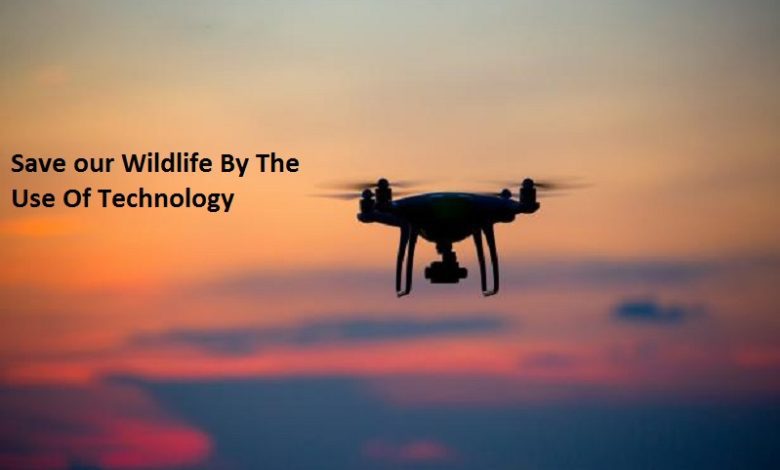
Our wildlife has seen a sharp decline in the past few years. Some of the species are on the verge of extinction. Additionally, the planet needs help to repair the damage done to the wildlife. Preservation of wildlife and nature is of utmost priority for future generations to come.
There are many serious threats to wildlife. This may lead to the destruction of natural habitats, climate change, and many other serious consequences.
With the advancement of technology, there is a ray of hope to save our wildlife. We can get them on the path to survival. These days, too many reasons are causing harm to nature and the wildlife.
For example, due to negligence, there are tremendous wildlife fires. Almost 85% of the damage in forests is due to forest fires. Moreover, this leaves no place for animals to stay. Also, it kills hundreds of wild animals. If we have the means, it becomes our duty to save them.
Saving the wildlife effectively
From new software to satellite-enabled cameras, there have been many inventions. These inventions are helping in the survival of wildlife in a safe environment. Further, technological inventions are contributing to the protection of our wildlife.
These inventions are an expensive deal and cost a huge amount. The government funds the organizations to take these steps. Some of the helpful inventions are:
Inventions to save animals
1. Camera trapping
Getting animals on camera is not an easy task. Technology has also helped us take a sneak into the wildlife. But studying animals in the wildlife is a daunting task.
With the invention of wildlife camera traps, it has become easier to monitor wildlife animals. The cameraman does not need to go nearby the animals. The camera captures them from a far distance.
There is a simple approach to fit these cameras in the wildlife. They fit the camera in any location close to the animal and which is familiar too. This includes a tree or a water hole.
These cameras have eliminated the need for photographers to stay at the location. The camera placement is based on censors. The animal’s activity will trigger the camera. This makes the recording easy.
Camera trapping has been a significant step in preserving wildlife. Also, this helps in bringing them back from the verge of extinction. Always try to understand the wildlife behavior to be able to save them.
These cameras capture a lot of information on animals. The recordings help in a great manner to the researchers and wildlife people.
These cameras operate with modern batteries that provide clarity and effective supervision. There is no common time for this. It can be night or day or both. It has also made transmission easier through satellite sharing.
The images and videos can be easily and instantly shared with other continents and people. This solves the problem of weak mobile networks.
This step has helped decrease the gap between humans and animals.
Furthermore, these photos are helping budding scientists to create more apps and tools to save our wildlife by every means. Also, these scientists can work more closely with the wildlife. This is because of the close monitoring by these cameras.
People using the latest technology phones can have access to these photos and videos. Also, they download them for free to know more about our wildlife.
2. Restrict poaching through sensor alarms
Illegal wildlife poaching is one of the biggest concerns. But technology has helped us monitor it and reduce it to some extent.
The technology has helped build a multi-sensor alarm system to deal with illegal wildlife poaching.
Multi-sensor alarm system makes use of satellite technology to capture images. There is a metal detector that sends an alert from anywhere.
The rangers use this technology to fight against illegal poaching. This has reduced the threat to wildlife and helped protect certain wildlife areas.
The technologies solve the location constraint. Also, Images and videos are easily sent to the concerned people.
Instead of mobile networks and other methods, the satellite transmission method is entirely safe to share important information.
3. SMART conservation
There is a great development of the SMART TOOL. The tool helps in the protection of wildlife and forests. Conservation organizations develop it for the collection of the data.
It also helps in the analysis and reporting of confidential wildlife data. Various sources capture this data. The main wildlife areas cannot be leftover with limited security. Every area is protected in an effective way to ensure safety.
Along with this, continuous monitoring happens by the rangers patrol. The purpose is to monitor animals, too, as a sick animal may start a disease outbreak. If analyzed and monitored carefully, the wildlife data can be very useful for saving wildlife.
GPS units have an essential role to play to monitor rangers’ movements and guide them towards any illegal poaching. The collected standardization helps in creating maps.
SMART is free and open software that is available in multiple languages. People who are dealing with technology have taken huge advantage of this form of digitalization.
Currently, 35 countries are making use of this existing technology. Additionally, there are 145 sites that are benefiting from this technology.
The wildlife technology inventions are a costly affair. Hence, the government funds these projects to help save wildlife. Mainly, many organizations plan to enter into wildlife conservation by applying for funding.
There are certain loans that are readily available, but these technologies require huge amounts, and hence, it is difficult for private organizations to enter into them.
As an individual, you can plan on taking out loans for the unemployed and take measures on an individual level.
Conclusion
It is essential to conserve wildlife in today’s times. Many people are becoming ignorant and do not take care of the animals. With the increasing use of technology, we have got many ways that can help us.
Every step should be effectively impactful in order to be on the safe side. It becomes our responsibility to protect the wildlife and our environment as a human. Also, we have the rights and the means to take adequate measures.






